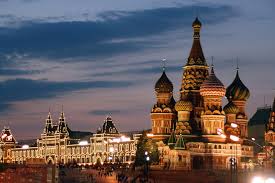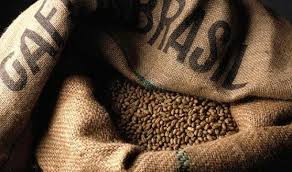The major differences between capitalism and communism are the control of resources and/or the means of production. In communism, the community or society solely owns the resources or means of production. In Capitalism, the resources or the means of production lies with a private owner. The profit of any enterprise is equally shared in by all the people, the profit in a capitalist structure belongs to the private owner only (No Author, 2009). While the private party controls the resources in capitalism; it is the society that controls the whole means of production in communism. No one having control over the means of production implies that everything is shared by all in communism. All wages are equal for all; no one is richer or poorer than others. Basically, communism stands for a classless society. On the other hand, Capitalism divides the society into rich and poor. Lastly, if individuals want to raise the ladder, all they have to do is work harder.
Communism in Russian can be attributed to the harsh life of 19th century. Communism developed which became popular amongst the workers of Russia due to the many difficulties experienced through Tsarist rule. Tsar failed and a new government was setup, Duma, but it couldn’t manage the problems that Russia had. The events of the revolution changed Russia completely and brought a new form of government. This group was called “Soviets” whom took over the government. A communist government was established in result, as the Soviet Union (Moran & Harris, Pg. 438).
Due to communist rule, the Soviet Union government approved the NEP (New Economic Policy) which called for virtually all aspects of the economy to be centrally planned. All workers were now working for the collective good of the state and individual profits were not allowed. Everyone was on equal social status terms with the hopes that all citizens would be self-sufficient and properly taken care of. This plan was an immediate failure as five million people died in a famine, within the first few years (No Author, 2012).
The majority of citizens in Soviet Union were illiterate with no training or education. The government brainwashed Russians by using propaganda and false information in order for workers to buy into the communist plan. This plan was a failure which resulted in a constant struggle for workers. Moreover, as a result of the government failing another famine occurred due to lack of agriculture, resulting in millions of deaths (No Author, 2012).
The communist rule did not offer any signs of hope to the Russian Federation. Every century more and more danger appeared. The economy fell harder, as other countries continued to grow. For example: during the advancement of computers and technology the Soviet System misused its resources and concentrated only on military instead of industries that may have benefited the society.
The communist days were numbered, in 1991, an independence movement arose, causing the USSR to implode and break up as a union of socialist republics (Moran & Harris, Pg. 438). Russia held its first ever election, electing Boris Yeltsin. He had plans for drastic market reforms through the use of shock therapy. The reforms involved withdrawing regulations, price controls and subsidies to the state owned industries and opening up the nation to import goods at cheaper prices thereby diminishing monopolies the government had set up(No Author, 2012). This was the major obstacles towards adapting a capitalistic system.
Before the turn of the century Russia realized capitalism was simply not working. Despite high levels of education the Russian population simply lacked business skills. The economy underwent a depression and life expectancy declined sharply with the poverty rate at an all-time high. Many Russians, felt that they were better off during the communist regime. Several Eastern European countries share a history of Communist rule. While Communism has left its mark in this region, it’s now a thing of the past for many European Countries.
Positive aspects of capitalism are that it gives individuals motivation. All capital is owned privately and individuals always have the ability to start their own business or other endeavors. Everyone has the hope that if they work hard they can improve their quality of life. Unfortunately, capitalism is not a stable economic system compared to communism. Although, there is opportunity to improve one’s situation, it is not possible for everyone to do so. A negative aspect is that unemployment is common and there is a wide gap between the rich and poor. Communism tends to be more stable due to capital being evenly distributed. In communism the state owns the capital gains and the government is supposed to take care of the workers in the region (doesn’t happen obviously in every situation). Although this may seem beneficial, it puts limits in life. Furthermore, it keeps one from reaching their full potential by not allowing them to see how hard one is willing to work or how far one will go when everyone is on an equal plane.
References:
Moran, R., & Harris , P. (2011). Managing cultural differences global leadership strategies for cross-cultural business success (8th ed.). Burlington, MA: Butterworth-Heinemann.
No Author. (2009). Difference Between Communism and Capitalism. Accessed: November 23, 2014. http://www.differencebetween.net/miscellaneous/difference-between-communism-and-capitalism/
No Author. (2010). Differences between Capitalism & Communism and why did it start in Russia. Accessed: November 23, 2014. http://www.sahistory.org.za/article/capitalism-vs-communism-and-russian-revolution-grade-11#content-top
No Author. (2012). From Communism To Modern Day Capitalism: A History On Russian Economics. Accessed: November 23, 2014. http://www.benzinga.com/trading-ideas/long-ideas/12/02/2367216/from-communism-to-modern-day-capitalism-a-history-on-russian-#ixzz3JuTN66VF












